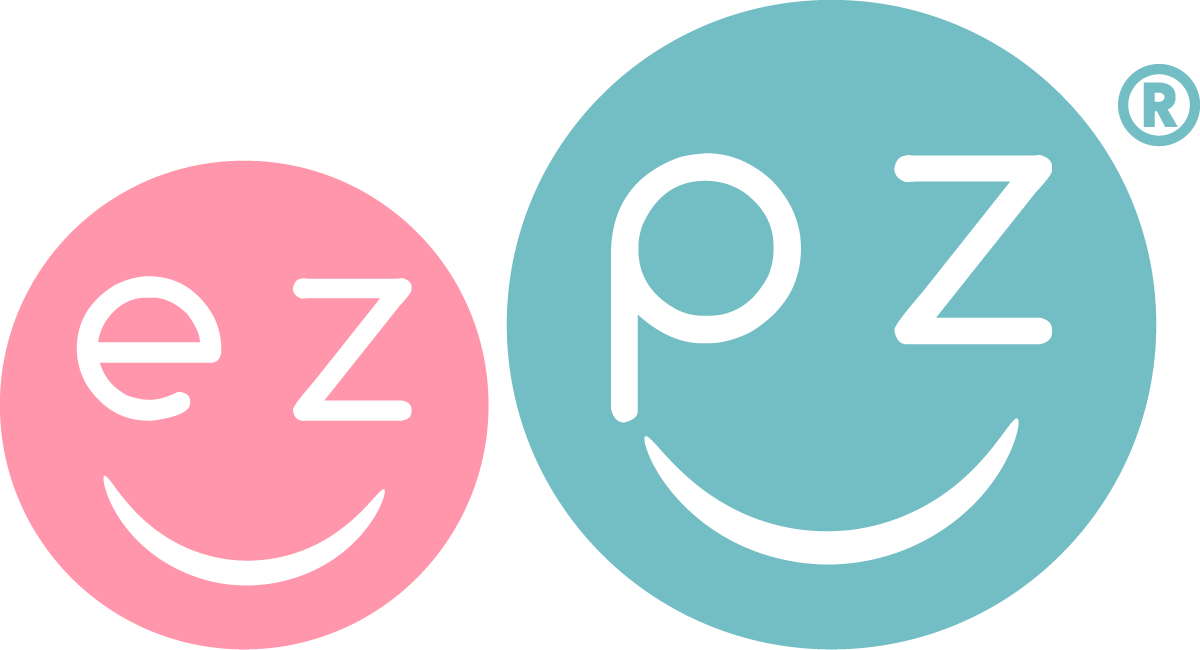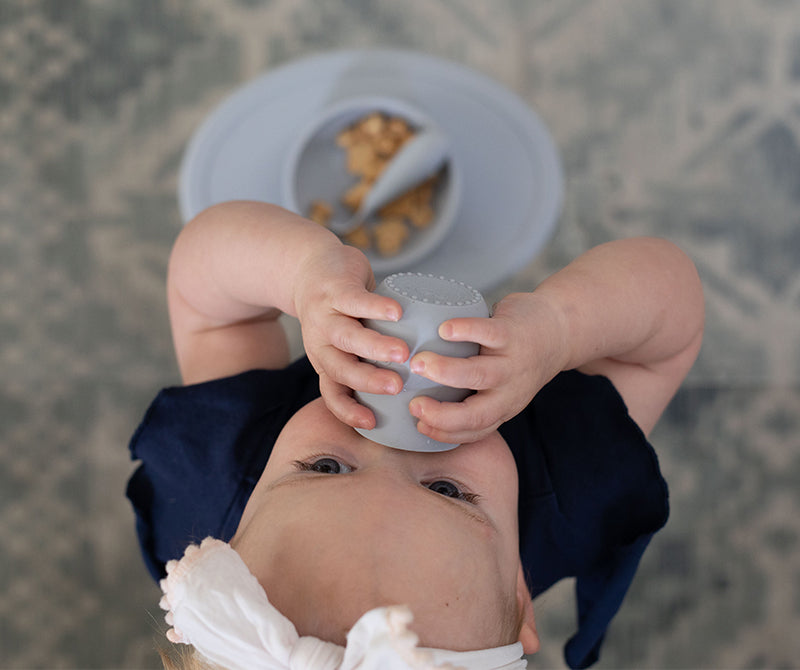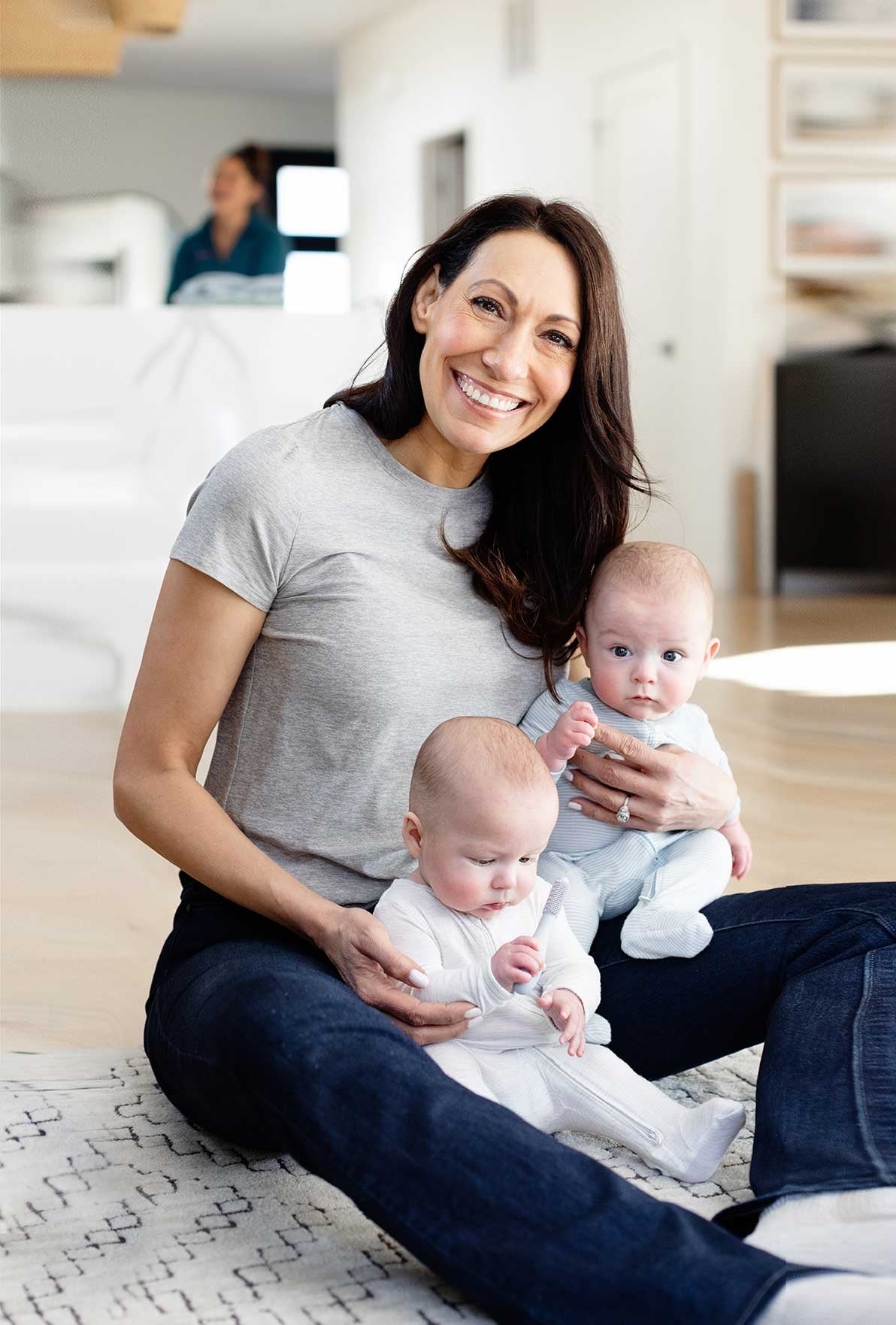Teaching your baby to drink from an open cup is a messy but important milestone for your baby. As a pediatric feeding specialist, I sometimes see parents struggle with teaching open cup drinking. Here are some of the most common struggles when troubleshooting the ezpz Tiny Cup.
Biting the Cup: Did you know that teething, starting solids and open-cup introduction oftentimes happen within the same timeframe? For most babies, teething will start at six months of age and continue until three years of age. Eating milestones and open-cup milestones also start at six-months of age and continue into late toddlerhood. The timing of these milestones (all occurring within the mouth) is not a coincidence. It’s a developmental process! These milestones are as follows:
- Eating: Baby should start solids at six months of age; ensure that they are showing the signs of readiness to begin.
- Teething: Around six months of age babies will gum objects (including an open cup) to provide stimulation to the emerging teeth in the front of the mouth.
- Drinking: Baby should drink from an open-cup (held by an adult) by six months of age. If your baby is biting the Tiny Cup, know that it is a normal stage in your baby’s development. Your baby is learning to chew and gum foods, and they may carry over that chewing movement to drinking for a short time. Eventually they will figure out that, for drinking, a different mouth movement is required. In addition, your baby might munch the rim of the cup to help relieve the discomfort of teething and allow the cold milk to soothe their gumline.
Tongue Going Under the Cup: Some babies will place their tongue under the Tiny Cup’s rim while drinking (instead of the tongue staying inside their mouth). Don't worry… that's totally normal. Proceed with the following steps:
- Flex Rim: While your baby is taking a drink, flex the rim of the Tiny Cup. This tactile cue will help encourage your baby to pull their tongue back into the mouth and achieve the lip closure we are looking for.
- Temperature Change: You can also offer your baby a variety of warm and cold liquids from the Tiny Cup to help provide temperature stimulation. This drinking technique will help support proper placement of the tongue inside the mouth.
Grabbing the Cup: Developmentally, the first step in open-cup drinking is for a baby to drink from an open cup that is held and stabilized by their caregiver. But some babies will want to grab and hold the cup themselves, which may result in spilling. Here are some tips to help:
- Milk: For several months we are only offering breastmilk or formula inside the cup (water is not recommended for young babies). If your baby grabs the cup, allow them to hold it with you. Then, every couple of days, slowly give your baby a little more control of the cup. You can do this by encouraging your baby to hold the cup with both of their hands, while you still provide stability with your thumb and index finger. After weeks or months of practice and repetition (5 minutes per day) then allow your baby to independently drink the last sip of breastmilk or formula. That way, if your baby spills, it’s only one sip! Plus, your baby is improving their hand-to-mouth skills.
- Water: You can start to introduce water to your baby between 9-10 months of age. During this time, allow your baby to practice independent open-cup drinking with water from the Tiny Cup, three meals a day. If spills happen, no worries, it’s just water and not hard-earned breastmilk or expensive formula!
I hope these troubleshooting tips help you and your little one achieve success with open-cup drinking! Be sure to tag us in your mealtime pictures with our hashtags #tinycup #ezpzfun.



